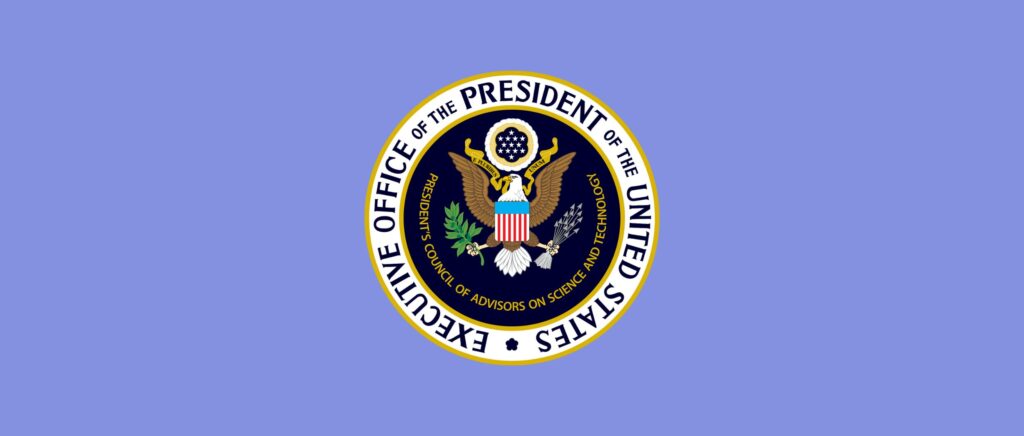
Fathom’s inclusion in a PCAST report to the President
In April 2023, the Executive Office of the President and President’s Council of Advisors on Science and Technology (PCAST) sent a report to the United States President entitled ‘Extreme Weather Risk in a Changing Climate: Enhancing prediction and protecting communities’.
The purpose of the report is to highlight the risks to communities and the federal government of extreme weather, bring attention to where advances are already being made, and draw upon recent scientific and technical progress to propose a national adaptation plan to help protect lives, livelihoods and property.
We at Fathom read the report with great interest and we welcome it for three main reasons:
- The report calls for further research and development into flood modeling for informed decision making. This echoes our own mission. We are proud that our methodology has been critically tested and refined through academic peer review and we continue to be published in world-leading scientific journals.
- A common theme is the need for increased transparency for an improved public and private climate risk ecosystem. We also support this recommendation, and believe open dialogue is key to informed decision-making and scientific advancement.
- The impact of climate change on flood risk is currently a juvenile – but growing – topic of scientific research. Our peer-reviewed research was cited numerous times in the report; a positive endorsement for the transparency and scrutiny to which we expose our data and methodology. We believe this is an essential practice to highlight the uncertainties within existing flood risk modeling, to ensure the data and its limitations are understood by those who use it and other scientists who wish to build upon it.
What is PCAST?
The President’s Council of Advisors on Science and Technology (PCAST) is a federal advisory committee appointed by the President to augment the science and technology advice available from inside the White House and federal agencies. PCAST is made up of 28 individuals, from outside the federal government who were chosen for their achievements and expertise across academia, government and the private sector. The PCAST team advises the President on numerous matters including science, technology and innovation policy, as well as providing information to inform policies impacting the economy, education, energy, the environment, national and homeland security, and other topics.
The key findings
The annual cost of climate and weather disasters is on the rise. Between 2016 and 2022, the National Oceanic and Atmospheric Administration cataloged over $1 trillion of damages caused by these disasters and weather extremes. The deeper cost on mortality rates, crop yields and health impacts only exacerbate the need for action.
The PCAST report investigates how recent scientific and technical advances could be used to provide more accurate and actionable information to guide decision-making and policy at all levels. It makes a number of recommendations.
Recommendation 1: a national effort to quantify extreme weather risk
Led by the federal government, action should be taken to better quantify and disseminate the current and future risks of extreme weather. This would include designating a lead agency who would be responsible for maintaining an extreme weather data portal, where observations and modeling products would be available for use. Guidance on the products and their reliability would also form part of the portal.
Recommendation 2: an improved ecosystem for climate risk assessment
To better predict the severity of weather hazards and the human and financial losses they will cause, a more collaborative ecosystem would improve the public and private sector tools that measure and evaluate this risk. To achieve this, an interagency group should be designated to inventory and release federal data pertaining to weather-hazard models. Guidelines should be established for measuring the accuracy of these models and more research conducted to advance model reliability.
Recommendation 3: a national adaptation plan to mitigate extreme weather risk
A national adaptation plan should be developed by the White House to help communities prepare for and adapt to changing risks caused by extreme weather events. A comprehensive assessment of disaster risk should be conducted to quantify the inconsistent risk levels and access to resources, and guidelines for allocation of disaster relief should be created. Meanwhile, regulatory changes should be made to reduce long-term risk exposure.
Fathom’s inclusion in the PCAST report
Throughout the report, research papers conducted by Fathom’s team of experts are referenced numerous times.
The first mention forms part of Recommendation 2.1 – the designation of an interagency group to first inventory and then release federal data that is useful for developing and validating weather-hazard models. This recommendation is made in response to the inaccessibility of privately-held historical data (such as claims data held by insurers) that would be valuable for other organizations to quantify risk. Given this data is not centrally owned, there is no benchmark against which model reliability can be measured. However the report highlights that it is possible to implement a skill scoring system, referencing a paper in Natural Hazards and Earth System Sciences led by our Chief Research Officer Dr Oliver Wing on ‘Simulating historical flood events at the continental scale: observational validation of a large-scale hydrodynamic model’. Within the paper, 35 flood events are modeled and compared to the observed flood extent, water level and building inundation levels. The resulting analysis is a framework through which hydrodynamic models for any recorded historical flood event in the US can be constructed, deployed, and validated.
The second reference to Fathom research appears in Recommendation 3 – a national adaptation plan to mitigate extreme weather risk. This recommendation is prefaced by an acknowledgement that many decisions need to be made at a local level, so a national plan will require a level of autonomy to be built in. It also acknowledges that local communities will have multiple concerns and disaster planning is only one, and many areas at high risk from extreme weather are lower income, as explored in a second paper led by Dr Oliver Wing on ‘Inequitable patterns of US flood risk in the Anthropocene’ and published in Nature Climate Change. As summarized by Dr Wing:
“The mapping clearly indicates Black communities will be disproportionately affected in a warming world, in addition to the poorer White communities which predominantly bear the historical risk. Both of these findings are of significant concern. The research is a call to action for adaptation and mitigation work to be stepped up to reduce the devastating financial impact flooding wreaks on people’s lives.”
The final reference of Fathom data can be found in Appendix C – an exploration of weather-hazard and catastrophe-loss models. This section provides a list of priority areas for research to further develop weather hazard models, with a paper led by our Chairman Professor Paul Bates and published in Water Resources Research on ‘Combined modeling of US fluvial, pluvial and coastal flood hazard under current and future climates’ named as the source of this list. The list comprises:
- The application of the latest high-performance computing techniques to inundation modeling, for efficient high-resolution numerical solutions with sub-grid scale river channels.
- An improved understanding of soil infiltration in complex landscapes i.e. highly variable terrain, soil structures and land cover.
- The improvement of fine-scale models of urban flooding, including realistic representations of impermeable surfaces and water control measures.
- Improved input data on flood defenses, flood control structures and channel bathymetry. Achieved through the acceleration and extension of LiDAR data, and continued support of NOAA and the USGS to collect data from high-quality measuring sites to accurately determine non-stationary probability-magnitude relationships.
- Model validation data: better observations of flood extent and water level through time during floods, particularly on floodplains and in urban areas. Data from the NASA SWOT satellite mission is expected to support this. Learn more about the SWOT mission and our involvement.
Discover the latest research papers from Fathom’s team
Key takeaways from the PCAST report
We believe this report has the potential to help government agencies, businesses and households make sound decisions on how to future-proof communities from extreme weather risks such as flooding.
It is encouraging to see this report released and, at the highest level in government, to hear a call for standardization of flood modeling validation and improved data sharing in order to better define and mitigate flood risk.
There are potential downsides to quantifying this risk publicly. For example, by highlighting areas of high risk, local property values will likely fall, and insurance provisions could break down. Given that lower income areas have been recognized as bearing the brunt of flood risk, a national adaptation plan would need to ensure federal funds are available to target the areas that will benefit the most from support.
Once risk is better defined, federal programs have the potential to transform exposure to extreme weather events through a number of approaches: insurance subsidiaries, mitigation grants, relocation grants for communities at high flood risk, improved building standards (which is already underway thanks to the National Initiative to Advance Building Codes) and freely available planning assistance and guidance to help states and municipalities plan for disasters.
Finally, we are grateful that both the research team behind this report, and the experts they spoke to, place value on the research that has been conducted by Fathom’s scientists and see it as a source of information to help drive progress.
